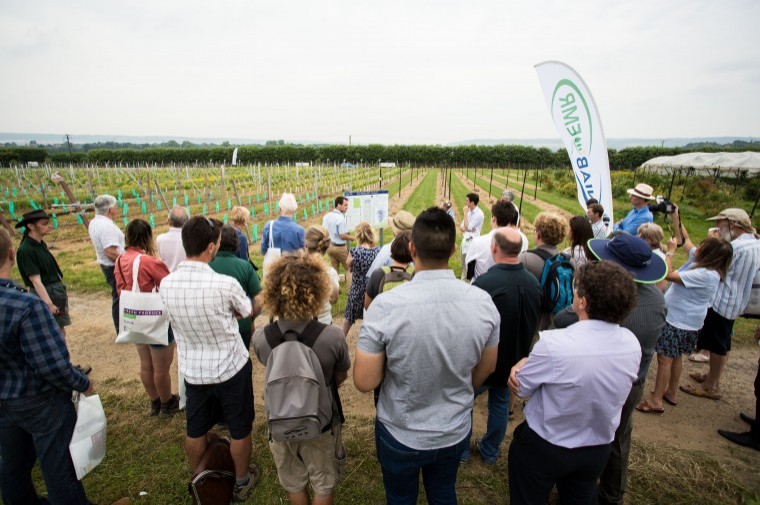Based at the NIAB East Malling Research (EMR) site in Kent, Fruit Focus offers visitors an opportunity to tour around the concept pear orchard, the research vineyard, and the brand new water efficient technologies (WET) centre.
“The start of 2017 resulted in tough situations for some growers, with drought and frost causing high crop damage and losses,” said event director Jon Day. “The NIAB EMR tours aim to provide an update on how the research is progressing and will give growers an insight into what can be done to tackle other challenging situations in future.”
The WET centre will showcase the latest developments in irrigation management and moisture sensing technologies, and will be launched at Fruit Focus on July 19. Initially, the WET centre will concentrate on soft fruit, but this will be expanded in the future to include tree fruit and salad crops. “The WET centre will demonstrate how substrate water availability can be managed in a commercial strawberry crop with unprecedented accuracy and precision, so helping growers to improve consistency of both marketable yields and berry quality while using valuable resources such as water and fertilisers more efficiently,” explained Dr Mark Else, head of the crop science and production systems department at NIAB EMR.
“The precision Irrigation system will help growers to improve their on farm production efficiencies while reducing the environmental impact of intensive soft fruit production. This is particularly relevant in light of the on going water abstraction licence reform and the challenges around achieving ‘good quality’ status for our water bodies since growers must be able to show that they are using irrigation water and fertilisers efficiently and effectively,” he explained.
The WET centre has been developed in collaboration with a number of commercial partners: Berry Gardens Growers, Delta T Devices, Netafim UK, New Leaf Irrigation and Cocogreen (UK), with further support from Meiosis, Kent county council and Linking Environment and Farming (LEAF).
Visitors will also be able to return to the concept pear orchard, which compares yields obtained using different continental and conventional English growing systems and is now well established at the site. Though yields are typically more than three times the national average, 2016 proved to be a difficult period for the orchard, resulting in its first fall in productivity.
“Growers will be able to see what we have done and how we have tackled problems in the orchard,” said Graham Caspell, farm and horticultural services manager at NIAB EMR. “The question is: 2016, what went wrong? Everyone has had issues this past year, so on the tour visitors can hear my ideas of the science behind why things went wrong and what we can learn from this.”
This is the first season that the research vineyard will produce fruit. Soil management is critical at this stage, and a lot of UK wine producers understand the task of maintaining healthy soils and reducing erosion. The vineyard tours, led by Dr Emma Tilston, soil and rhizosphere scientist; and Dr Julien Lecourt, vine and tree physiologist, will focus on research areas such as soil health, weeds, crop phenology, quality and yield.
Like other crops, vineyards have suffered from the late frosts in 2017, so the tours will also address the impacts of the frosts and how different varieties and clones in the trials have been affected.
<a href=”http://www.southeastfarmer.net/assets/flipbook/2017/SEF0717/SEF07July17.html#p=28>Click here to read our full preview




